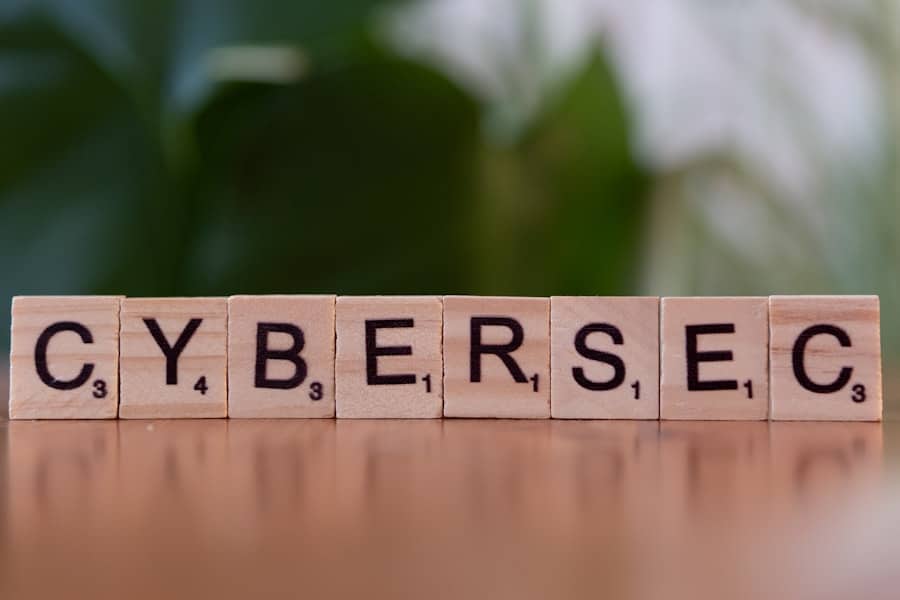The concept of the Metaverse has evolved from a niche idea in science fiction to a burgeoning reality that captivates the imagination of technologists, gamers, and entrepreneurs alike. At its core, the Metaverse represents a collective virtual space that merges physical and digital realities, allowing users to interact with each other and their environment in immersive ways. This digital universe encompasses a variety of experiences, from virtual reality (VR) and augmented reality (AR) to social networking and online gaming.
The Metaverse is not merely a single platform but rather an interconnected ecosystem of virtual worlds, applications, and services that facilitate social interaction, commerce, and entertainment. As technology advances, the Metaverse is becoming increasingly accessible to a broader audience. With the proliferation of high-speed internet, affordable VR headsets, and sophisticated software development tools, users can now engage in these virtual environments with relative ease.
Companies like Meta (formerly Facebook), Microsoft, and Epic Games are investing heavily in building their own versions of the Metaverse, each with unique features and functionalities. This convergence of technology and creativity is paving the way for new forms of social interaction, economic activity, and cultural expression, making the Metaverse a focal point for innovation in the digital age.
Key Takeaways
- The metaverse is an emerging virtual space gaining rapid popularity and user engagement.
- Increased data sharing in the metaverse raises significant privacy and security concerns.
- Virtual assets and transactions are vulnerable to cyber attacks and exploitation.
- Lack of regulation and oversight exacerbates cybersecurity risks in virtual environments.
- Proactive measures are essential to mitigate potential real-world security impacts from metaverse threats.
Growing Popularity of the Metaverse
The popularity of the Metaverse has surged dramatically in recent years, driven by a combination of technological advancements and changing consumer behaviors. The COVID-19 pandemic accelerated this trend as people sought new ways to connect and socialize while adhering to social distancing measures. Virtual events, such as concerts and conferences held in platforms like Roblox and Fortnite, showcased the potential of the Metaverse to bring people together in engaging ways.
These experiences not only entertained but also fostered a sense of community during a time of isolation. Moreover, the rise of non-fungible tokens (NFTs) has further fueled interest in the Metaverse. NFTs allow users to buy, sell, and trade unique digital assets, such as virtual real estate, artwork, and collectibles.
This new form of ownership has attracted artists, gamers, and investors alike, creating a vibrant marketplace within the Metaverse. As more individuals recognize the value of digital assets and experiences, the demand for participation in these virtual worlds continues to grow. The integration of blockchain technology into the Metaverse also enhances transparency and security, making it an appealing option for users looking to engage in digital commerce.
Increased Data and Privacy Concerns

As the Metaverse expands, so do concerns regarding data privacy and security. Users generate vast amounts of personal data while interacting within these virtual environments, including behavioral patterns, preferences, and even biometric information through VR devices. This data is often collected by companies operating within the Metaverse for various purposes, such as targeted advertising or improving user experiences.
However, this accumulation of sensitive information raises significant privacy concerns. The potential for data breaches is another pressing issue. High-profile cyberattacks on major corporations have demonstrated that no organization is immune to security threats.
In the context of the Metaverse, a breach could expose users’ personal information or even their virtual assets. The decentralized nature of many Metaverse platforms complicates matters further; users may not always know who is collecting their data or how it is being used. This lack of transparency can erode trust among users and deter them from fully engaging with these digital spaces.
Vulnerabilities in Virtual Assets and Transactions
The Metaverse is characterized by its unique economy, where virtual assets hold real-world value. Users can buy, sell, and trade items ranging from virtual clothing for avatars to entire plots of digital land. However, this burgeoning economy is not without its vulnerabilities.
The reliance on digital currencies and blockchain technology introduces risks associated with transaction security and asset ownership verification. For instance, smart contracts—self-executing contracts with the terms directly written into code—are often used to facilitate transactions within the Metaverse. While they offer advantages such as automation and reduced reliance on intermediaries, they are also susceptible to coding errors or exploits that can lead to significant financial losses.
Additionally, users may fall victim to scams or phishing attacks designed to steal their virtual assets or credentials. The lack of established protocols for securing transactions in these environments further exacerbates these vulnerabilities.
Rise of Cyber Attacks in Virtual Environments
As the Metaverse gains traction, it has become an attractive target for cybercriminals seeking to exploit its unique characteristics. The rise of cyber attacks in virtual environments poses a significant threat to users and businesses alike. These attacks can take various forms, including Distributed Denial-of-Service (DDoS) attacks that disrupt services or ransomware attacks that hold virtual assets hostage until a ransom is paid.
Moreover, social engineering tactics are increasingly being employed within the Metaverse. Cybercriminals may impersonate trusted figures or create fake accounts to manipulate users into divulging sensitive information or transferring assets. The immersive nature of virtual environments can make it challenging for users to discern genuine interactions from malicious ones.
As more individuals engage with the Metaverse for socializing or commerce, the potential for cyber attacks will likely continue to grow.
Lack of Regulation and Oversight

One of the most significant challenges facing the Metaverse is the lack of regulation and oversight governing its operations. Unlike traditional financial systems or online marketplaces that are subject to regulatory frameworks, many aspects of the Metaverse operate in a legal gray area. This absence of regulation creates opportunities for bad actors to exploit vulnerabilities without fear of repercussions.
The decentralized nature of many Metaverse platforms complicates regulatory efforts further. Different jurisdictions may have varying laws regarding digital assets, data privacy, and online interactions, leading to inconsistencies in enforcement. As a result, users may find themselves unprotected against fraud or abuse within these environments.
The need for comprehensive regulations that address issues such as consumer protection, data privacy, and cybersecurity is becoming increasingly urgent as the Metaverse continues to expand.
Potential Impact on Real-World Security
The implications of the Metaverse extend beyond its digital confines; they can significantly impact real-world security as well. As users invest time and resources into their virtual identities and assets, any breaches or attacks within the Metaverse can have tangible consequences in their physical lives. For example, if a user’s virtual wallet is compromised, it could lead to financial losses that affect their real-world finances.
Furthermore, as businesses increasingly establish a presence in the Metaverse—whether through virtual storefronts or immersive marketing campaigns—their security becomes intertwined with that of the digital environment. A successful cyber attack on a company’s virtual operations could damage its reputation and lead to financial repercussions that extend into its physical operations. The interconnectedness between virtual and real-world systems necessitates a holistic approach to security that considers both realms.
Steps to Mitigate Cybersecurity Risks in the Metaverse
To address the myriad cybersecurity risks associated with the Metaverse, stakeholders must take proactive measures to enhance security protocols and protect users. One critical step is implementing robust identity verification processes to ensure that users are who they claim to be. Multi-factor authentication (MFA) can add an additional layer of security by requiring users to provide multiple forms of identification before accessing their accounts.
Education plays a vital role in mitigating risks as well. Users should be informed about potential threats within the Metaverse and trained on best practices for safeguarding their personal information and virtual assets. This includes recognizing phishing attempts, understanding how to secure digital wallets, and being cautious about sharing sensitive information with others.
Additionally, developers must prioritize security when creating applications for the Metaverse. Conducting thorough security audits and employing best practices in coding can help identify vulnerabilities before they are exploited by malicious actors. Collaboration among industry stakeholders—ranging from developers to regulators—will be essential in establishing standards that promote safety within these digital environments.
As the Metaverse continues to evolve, addressing cybersecurity risks will be paramount in ensuring its long-term viability as a safe space for users to interact, create, and transact. By fostering a culture of security awareness and implementing robust protective measures, stakeholders can help build a resilient Metaverse that thrives on innovation while safeguarding its participants from potential threats.
A related article that explores the broader landscape of digital security is titled “The Best Niches for Affiliate Marketing in Facebook,” which discusses how online platforms can be vulnerable to various threats. You can read more about it here. This connection highlights the importance of cybersecurity awareness not just in the metaverse, but across all digital interactions.
FAQs
What is the metaverse?
The metaverse is a collective virtual shared space created by the convergence of virtually enhanced physical reality and persistent virtual environments. It includes augmented reality (AR), virtual reality (VR), and other digital spaces where users can interact, work, and socialize.
Why are cybersecurity risks increasing in the metaverse?
Cybersecurity risks are rising in the metaverse due to its complex and interconnected nature, the use of new technologies, increased data sharing, and the presence of valuable digital assets. These factors create more opportunities for cyberattacks, data breaches, identity theft, and other malicious activities.
What types of cybersecurity threats are common in the metaverse?
Common cybersecurity threats in the metaverse include phishing attacks, identity theft, malware infections, unauthorized data access, virtual asset theft, social engineering, and exploitation of software vulnerabilities.
How does user identity play a role in metaverse cybersecurity?
User identity is critical in the metaverse because digital identities are used to access virtual environments and assets. If these identities are compromised, attackers can impersonate users, steal assets, or manipulate interactions, leading to privacy violations and financial losses.
What measures can users take to protect themselves in the metaverse?
Users can protect themselves by using strong, unique passwords, enabling multi-factor authentication, being cautious about sharing personal information, verifying the authenticity of virtual environments and contacts, and keeping their software and devices updated.
How are companies addressing cybersecurity in the metaverse?
Companies are investing in advanced security technologies, developing robust authentication methods, implementing encryption, conducting regular security audits, and educating users about safe practices to mitigate cybersecurity risks in the metaverse.
Is regulation involved in managing cybersecurity risks in the metaverse?
Regulation is still evolving in the metaverse space. Governments and regulatory bodies are beginning to explore frameworks to address privacy, data protection, and cybersecurity challenges specific to virtual environments, but comprehensive regulations are not yet fully established.
Can virtual assets in the metaverse be stolen?
Yes, virtual assets such as digital currencies, NFTs, and virtual goods can be stolen through hacking, phishing, or exploiting vulnerabilities in metaverse platforms, making asset security a significant concern.
What role does software vulnerability play in metaverse cybersecurity?
Software vulnerabilities in metaverse platforms can be exploited by attackers to gain unauthorized access, disrupt services, or steal data. Regular updates and patches are essential to minimize these risks.
How does the interconnectedness of the metaverse affect cybersecurity?
The interconnected nature of the metaverse means that a security breach in one platform or service can potentially impact others, increasing the overall risk and complexity of managing cybersecurity across multiple environments.

